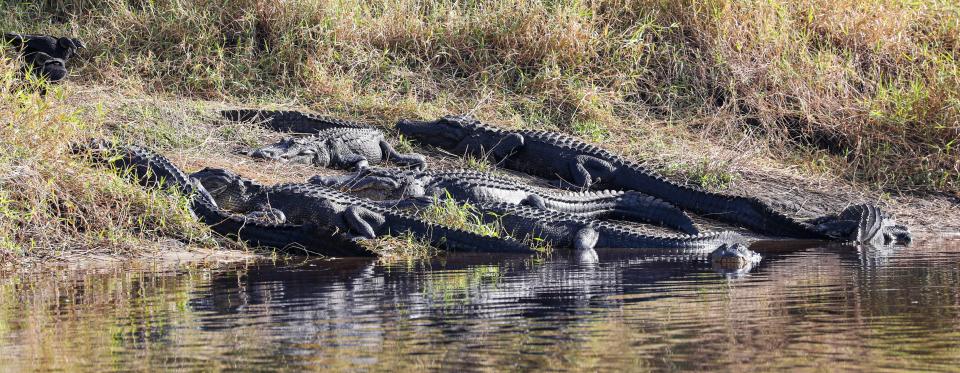What's the difference between an alligator and a crocodile?
Having trouble telling alligators and crocodiles apart?
There are some signs that make it easy to distinguish between the two, if you know what to look for.
And southern Florida is about the only place you can find both alligators and crocodiles living wild in the same place.
Be safe: Staying stay safe around alligators means keeping away, no feeding
Crocodile in Florida: Crikey! American crocodile lives at this Palm Beach County golf course — and is there to stay
Animal attractions: Panthers, crocodiles and black bears, oh my: Here are Florida's top 10 animal attractions
Florida is known for its giant reptiles and ancient critters that roam the rivers, lakes and swamps that strike fear in the hearts and minds of many. What you mainly see are alligators.
But crocodiles live here too: Their native range is from the Sanibel area south to Everglades National Park and then north along the east coast to the Jupiter area.
Holly Milbrandt, a biologist for the City of Sanibel, and others know of two female crocodiles that currently live on Sanibel.

Both are tagged, and one was relocated to J.N. "Ding" Darling National Wildlife Refuge on Sanibel in 2010 after the death of another female that lived on the island for decades.
The giant reptiles have also been reported in Cape Coral in recent years.
Still, the chances of seeing a crocodile in the wild are long. If you see a 10-foot reptile with a long tail and lots of teeth, it's probably an alligator as there are upwards of two million living in the Sunshine State.
But there are only 1,500 or so crocodiles, which are listed as endangered by the federal government and threatened by the state.
More: Alligator attack reported at Wa-Ke Hatchee Park in Fort Myers; man in critical condition
Not just gators: American crocodile adapts to changing Everglades, study shows
How to tell the difference between an alligator and crocodile
So how do you tell them apart?
"Alligators are really dark brown to black in color whereas the crocodile will be more greenish-grey," Milbrandt said.
"Some of the other distinguishing characteristics have to do with the shape of their head," she said. "The crocodile head is much more narrow at the end of the snout and tapers in and is more triangular and the alligator is much more broad and rounded snout. It’s almost the same width from the eyes all the way to the snout."
They live primarily in saltwater habitats like ponds, mangrove forests and coastal creeks.
Sometimes confused with the much larger and more aggressive crocodiles found in Australia, Africa and southeast Asia, the American crocodile (Crocodylus acutus) is relatively docile and shy.
Watch video: 'I used the front like a hippo mouth': Florida man catches alligator in trash can to 'protect my kids'
Just the facts: American crocodile
» Found in South Florida, Mexico, Central and South America and the Caribbean.
» Nesting occurs on well-drained, sandy areas near salt or brackish water. Females begin building nests in March and typically lay about 40 eggs in late April or early May. They return in July or August to dig up the nest and sometimes transport the hatchlings to the water.
» Like alligators, crocodiles control their body temperature by basking in the sun or moving to a cool, shaded area. Crocodiles sometimes lay with their mouths open, which is not a sign of aggression.
» Will eat almost anything that moves. Hatchlings and young crocodiles feed on small fish, snails and insects while adults eat fish, crabs, turtles, snakes and small mammals.
» Listed as an endangered species by the U.S. Fish and Wildlife Service in 1975.
» State and federal laws prohibit killing, harassing and possessing crocodiles.
Sources: Florida Fish and Wildlife Conservation Commission, University of Florida, U.S. Fish and Wildlife Service
This article originally appeared on Fort Myers News-Press: Alligator and crocodile differences explained

